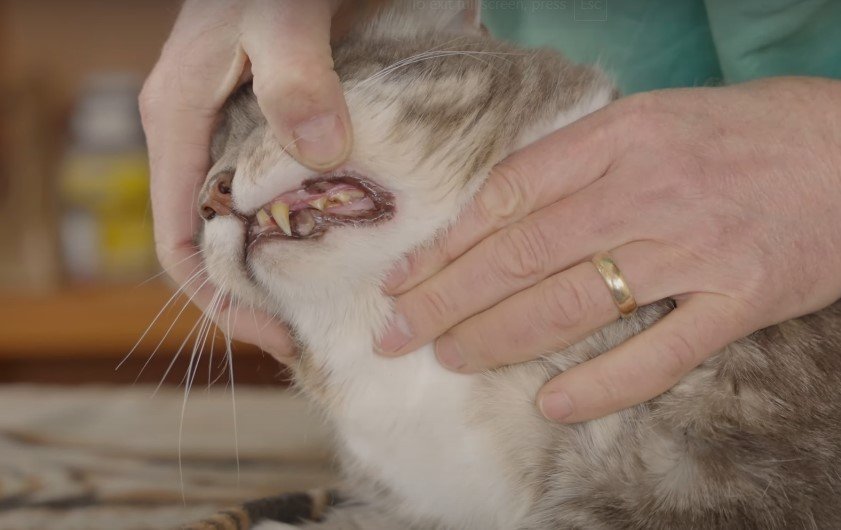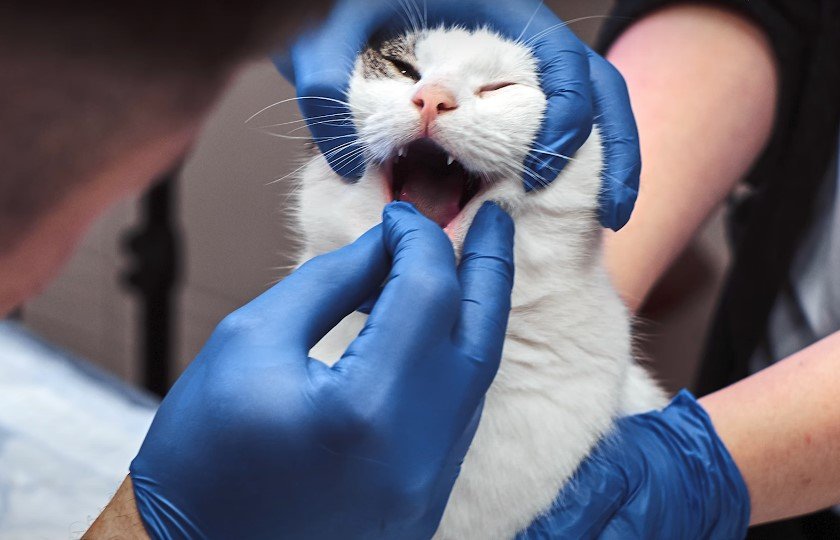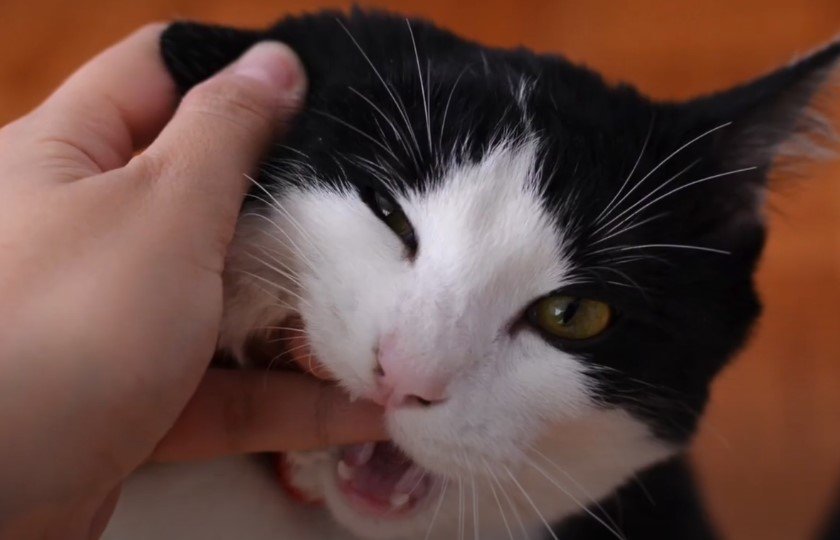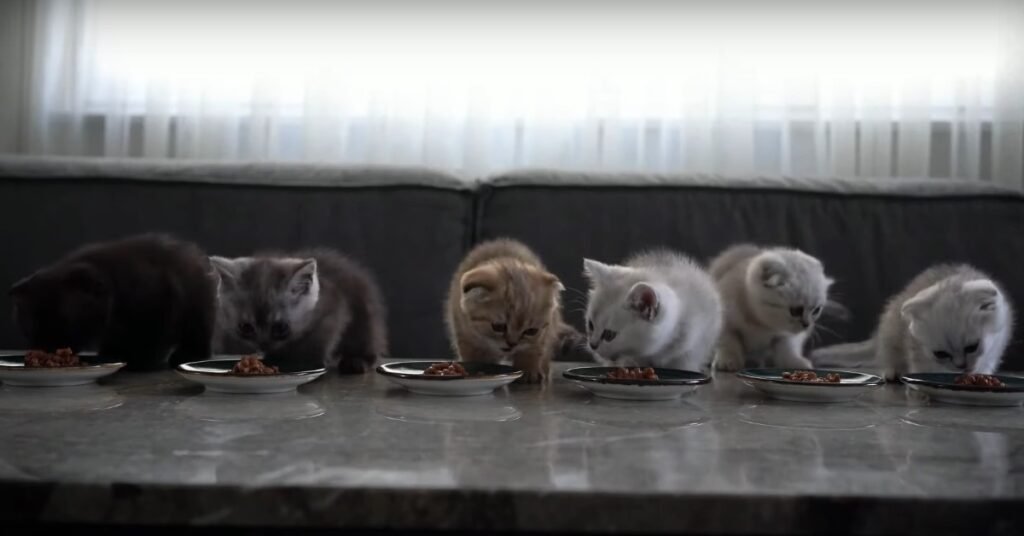
Do cats lose teeth in old age? Yes, some cats can lose teeth as they age. But, is this normal for your feline friends, or does it indicate a dental problem or other health concerns?
As cats age, their bodies change, including their teeth. Some tooth loss is natural, but it can be a sign of serious dental disease, gum infections, or even underlying health concerns like kidney disease or diabetes. Studies indicate that between 50% and 90% of cats over four years old develop some form of dental disease.
Neglecting tooth loss can lead to infections, pain, and eating difficulties. It’s best for your cat if you identify this problem as soon as possible and take appropriate measures. But how to check and protect your cat’s dental health, I will tell you everything in this article.
We’ll also explore why cats lose teeth as they age and what warning signs to look for.
What Is Cat Dental Disease?
Cat dental disease includes various oral health problems that affect a cat’s teeth, gums, and mouth. It is a common and serious issue, affecting up to 90% of cats over three.
Many cat owners have a vague idea of cat dental disease, but don’t understand how it develops.
It starts with plaque—a sticky layer of bacteria that naturally forms on your cat’s teeth. If not removed, it hardens into tartar, which is more difficult to clean.
Tartar irritates the gums, causing inflammation, infection, and damage to nearby tissues. Over time, this can make the teeth loose and eventually cause them to fall out.
5 Common Types of Cat Dental Disease
Cat dental disease is a serious health issue that can cause pain, infection, and tooth loss. Here are five common types every cat owner should know:
1. Gingivitis
Gingivitis is the earliest stage of dental disease. It occurs when plaque and tartar build up along the gumline, causing redness, swelling, and irritation. Proper dental care can reverse gingivitis if it is treated early.
Signs of Gingivitis:
- Red or swollen gums
- Bad breath (halitosis)
- Bleeding gums
- Discomfort while eating
- Drooling
Causes:
- Plaque and tartar buildup
- Poor oral hygiene
- Bacterial infection
- Underlying health conditions (e.g., FIV, FeLV)
- Diabetes
2. Periodontitis (Gum Disease)
If gingivitis isn’t treated, it can become a serious gum infection, periodontitis, leading to tooth loss. This condition affects the tissues and bones that hold the teeth in place.
Signs of Periodontitis:
- Receding or bleeding gums
- Loose or missing teeth
- Excessive drooling
- Difficulty chewing or eating
- Loss of appetite
- Pawing at the mouth
Causes:
- Untreated gingivitis
- Plaque and tartar accumulation
- Bacterial infections
- Lack of dental care
3. Tooth Resorption
Tooth resorption is painful when a cat’s body starts breaking down its teeth. It is one of the most common dental problems in cats, affecting up to 60% of felines. The cause is still unknown, but it leads to tooth decay and loss.
Signs of Tooth Resorption:
- Sudden tooth loss
- Dropping food while eating
- Pawing at the mouth
- Loss of appetite due to pain
- Weight loss
- Difficulty eating and chewing
- Bad breath (halitosis)
- Drooling
- Bleeding gums
Causes:
- Unknown (believed to be genetic or immune-related)
- Overactive cells break down the tooth structure

4. Stomatitis (Severe Gum Inflammation)
Stomatitis is an extreme inflammatory reaction in the mouth. It causes painful sores on the gums, tongue, and throat. Some cats develop this due to an overactive immune response to plaque. Severe cases may require tooth extractions.
Signs of Stomatitis:
- Severe mouth pain
- Excessive drooling
- Bleeding gums
- Loss of appetite
- Pawing at the mouth
- Difficulty eating
- Bad breath
- Weight loss
Causes:
- Overactive immune response to plaque
- Viral infections (FIV, FeLV, Calicivirus)
- Genetics
5. Oral Tumors
Oral tumors can develop in a cat’s mouth and may be cancerous. Squamous cell carcinoma is the most common type of oral cancer in cats. Early detection is crucial, as tumors can grow quickly and interfere with eating and breathing.
Signs of Oral Tumors:
- Lumps or sores in the mouth
- Drooling
- Difficulty eating or swallowing
- Weight loss
- Bad breath
- Loss of appetite
- Red and swollen gums
Causes:
- Possible genetic or environmental factors
- Exposure to cigarette smoke
- Wearing a flea collar
- Consuming canned cat food
- More common in older cats
How to Prevent Cat Dental Disease
To keep your cat’s teeth healthy and prevent dental disease, follow these simple tips:
- Brush Your Cat’s Teeth – Use a soft toothbrush and cat-safe toothpaste to brush daily.
- Provide Dental Treats & Toys – These help clean teeth and reduce plaque buildup.
- Schedule Regular Vet Checkups – Annual dental exams can detect issues early.
- Feed a Balanced Diet – Choose food designed to support dental health.
- Use Water Additives – Add a cat-safe water additive to help reduce plaque and tartar.
- Consider Dental Cleanings – Professional cleanings may be necessary for advanced cases.
What Should You Do if Your Cat Loses a Tooth?
If your cat loses a tooth, follow these steps to ensure their health and comfort:
- Check for bleeding or swelling. If you see either, your cat may be in pain or have an infection.
- Look for other missing teeth. Losing more than one tooth could mean a dental problem.
- Watch how your cat eats. If they struggle to chew or drool a lot, visit the vet.
- Find the cause. Tooth loss can happen due to injury, gum disease, or other dental issues.
- Take your cat to the vet. A vet can check for hidden problems and give the right treatment.
- Keep their teeth healthy. Brush regularly, give dental treats, and schedule checkups.
Note: Never ignore tooth loss in adult or senior cats—it’s usually a sign of a bigger problem.
What Should You Feed a Cat with No Teeth?
When feeding a cat with few or no teeth, it’s important to choose foods that are easy to chew and gentle on their gums. Here are 5 key guidelines:
- Soft Wet Food: Canned food is ideal as it’s soft and moist. It is easier to chew and swallow. It also helps keep your cat hydrated.
- Puréed or Pâté-Style Food: These types of food have a smooth texture that requires less chewing. You can also blend canned food if needed.
- Cooked Meat: Soft and cooked meats like chicken, turkey, or fish, shredded into small pieces to make it easier for your cat to eat.
- Avoid Dry Food: Dry kibble can be difficult to chew with few or no teeth and may cause discomfort or even injury to their gums.
- Smaller Portions: Cut food into smaller pieces to make it easier for your cat to eat.
How to Check Your Cat’s Teeth: A Step-by-Step Guide
Regular dental checks help prevent serious health issues in cats. Follow these steps to examine your cat’s teeth safely and effectively.
Choose a Calm Time:
Check when your cat is relaxed, such as after a meal or nap. Avoid stressful moments
Lift the Lips to Check the Teeth:
Gently lift the lips to see the gums and teeth. Keep the session short—30 seconds is enough.
Look for Signs of Problems:
Healthy teeth are white, clean, and free from cracks. But yellow or brown buildup may indicate plaque & tartar. Broken or loose teeth could be a sign of injury or disease. Missing teeth, abnormal in adult cats, indicate a dental issue.
Check the Gums:
Gums should be pink. Red or swollen gums are a sign of gingivitis or infection. Bleeding gums indicate gum disease or injury. Pale or blue gums may signal a serious health problem
Smell the Breath:
Mild odor is normal, but strong, foul breath may signal infection, gum disease, or an internal issue.
Look for Sores, Swelling, or Growths:
Check for ulcers, lumps, or any unusual spots or growths inside the mouth.
Observe Eating Behavior:
Difficulty chewing, drooling, or pawing at the mouth may mean tooth pain. Loss of appetite could be mouth pain or infection.
Do Cats Have Baby Teeth?
Yes, cats do have baby teeth, also known as deciduous teeth or milk teeth. Kittens are born without teeth, but their deciduous teeth begin to emerge at around 2 to 3 weeks of age.
Kittens typically develop 26 deciduous teeth, including:
- 12 incisors (for grasping and nibbling)
- 4 canines (for tearing food)
- 10 premolars (for chewing and grinding)
These temporary teeth start falling out at around 3 to 4 months, making way for permanent adult teeth. By 6 to 7 months, a kitten’s baby teeth are completely replaced by adult teeth. Deciduous teeth help kittens chew soft food before their stronger adult teeth emerge.

How Many Teeth Will Your Cat Have?
Cats have different numbers of teeth at various life stages. Here’s a breakdown:
- Kittens (Baby Teeth) – 26 teeth (deciduous/milk teeth)
- Adult Cats – 30 teeth (permanent teeth)
- Senior Cats – 30 teeth, but some may lose teeth due to dental issues
- Super Senior/Geriatric Cats – Fewer than 30 teeth if teeth are lost due to aging or dental disease
Conclusion
As cats age, they develop many dental diseases which cause their teeth to fall out. So, tooth loss isn’t normal. Periodontal disease, stomatitis, tooth resorption, oral tumors, and gingivitis are common causes of tooth loss in cats, especially in older cats.
Regular tooth brushing can prevent plaque buildup and serious infections. Consult a vet if your cat shows signs of dental trouble.
FAQs on Do Cats Lose Teeth As They Get Older?
1. At what age do senior cats lose their teeth?
There isn’t a specific age when senior cats start losing teeth, but tooth loss is more common in cats over 10 years old, especially if they have dental disease.
2. Is weight loss a sign of dental disease in older cats?
Yes, weight loss can be a sign of dental disease in older cats. Dental issues such as gum disease, tooth decay, or oral infections can cause pain, making it difficult for cats to chew their food properly. As a result, they may eat less or avoid eating altogether, leading to weight loss. You can also check out this article: How to Help a Senior Cat Gain Weight.
3. Can tooth loss affect my cat’s overall health?
Yes. Untreated dental issues can lead to infections that may spread to vital organs like the heart, kidneys, and liver. Tooth loss also makes eating difficult, leading to weight loss and malnutrition.
4. Is it safe for old cats to have their teeth removed?
Yes, old cats can safely have teeth removed if they are healthy. Vets check for risks like heart or kidney issues before surgery. Removing bad teeth relieves pain and prevents infections.
5. How much does it cost to remove a cat’s teeth?
The cost of cat tooth extraction varies based on location, severity, and the vet clinic. It typically ranges from $100 to $300 per tooth, while full-mouth extractions can cost $500 to $3,000, including anesthesia and aftercare.
6. Will my cat survive dental surgery?
Yes, most cats survive dental surgery and recover well. Vets use safe anesthesia and monitor them during the procedure. After surgery, your cat will need proper care, pain relief, and a soft diet for recovery.

